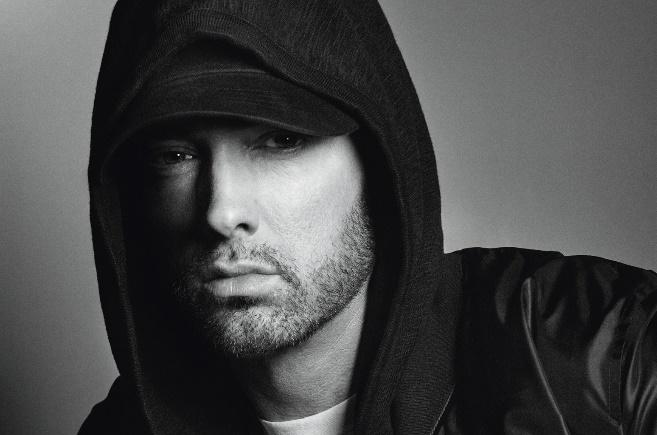Unlock the Perfect Branding Type & Make Your Brand Prominent
Every brand needs branding.
Okay where haven’t we heard that before? I’m sure every entrepreneur is aware of at least this much information by now so I won’t bore you with what you already know.
However, what most brands fail to understand is that branding itself is a tree with multiple branches. There are a lot of brands out there falling into different categories and types, right? Well, guess what?
There are at least 7 different types of branding!
Before I start breaking down this “branding” family tree, there’s a bit of information I feel many of you need to know to actually understand why every brand can’t come under one big branding umbrella.
What’s a brand?
Now this is something you think you might know the answer to but, you could be sadly mistaken my friends. Many people think of a brand as a product or a business. However, a brand is nothing more or less than the personality you assign to a product, business or even person – you read that right.
The exciting albeit tricky part is that the branding process will always have a lot of input from how customers perceive your brand. No matter what your communication says, a part of your brand will always be related to what customers think or say about the brand.
So for instance, McDonalds has a think global, act local strategy. It will provide the same quality all over the world so customers know what to expect no matter where they are on the map.
Furthermore, McDonalds claims it’s relatively fair-priced as compared to other burger joints. However, some people might be of the opinion that KFC is much cheaper considering the burger size or the number of items in a meal. Hence, even though McDonalds might aim to be your “cheap” quality go-to meal, consumers may not think of it that way.
Adding an ING to BRAND – what changes?
A lot! Whereas your brand is the personality you wish to assign to your product/business or any entity, branding is HOW you communicate that perception or personality to the world? Basically, this is where you direct your customers to make a particular perception regarding your brand.
Bringing the McDonalds example here again, the red and yellow colored ambiance along with the mascot Ronald McDonalds, is all part of the fast food joint’s branding to make their restaurants a place where you are bound to say “I’m loving it”. A happy place with “happy meals”. This ultimately makes up your brand identity! Think logos, fonts and colors.
Exploring the branding world
Now here’s the big question – the one you’ve wanted an answer to all along – what are the core types of branding? You’ll get to know which one you need once you go through all of these – and if you still aren’t sure you can always contact me and together we’ll have your branding tactics sorted in no time!
Corporate Branding – the image builder
It’s all about reputation. Corporate branding is the strategy you devise to build your company’s image – that’s right, not a product but an entire organization. It’s crucial to any big venture’s success because your company’s reputation will ultimately determine how customers will perceive any products or services you offer or may offer in the future.
Remember, your corporate branding will be dependent on a lot of things – let’s say almost everything you do under the company banner. When you’re focusing on corporate branding, you aren’t just concerned about your manufacturing process or the quality of your products or services, your employees fall into the mix as well.
How? If you’re treating your employees right, the good word will spread from a hundred happy employees to potential customers and even skilled people who’d want to work for you!
You can guess how quickly any bad news would spread – mistreating employees will ultimately result in negative corporate branding so your A-grade products/services might not sell well if your company gets a “bad employer” label.
Corporate branding or reputation goes beyond the parameters of employees and customers however, it can even impact your pricing strategy!
Let me fill you in on a concept known as “badge engineering” in the automobile industry.
You’ll see my point in a while.
In “badge engineering”, two identical cars or automobiles of any sort are assigned distinct names and badges, depending on their corporate branding .i.e. the reputation their selling- company holds in terms of price and target audience.
An example is the Aston Martin Cygnet and Toyota Scion iQ. Both same cars with different badges or identities. How were they different?
They weren’t. Aston Martin is a luxury car brand, hence if you had your eye on the Cygnet, you must be ready to pay a heavy price – literally. While the Scion was priced at $10,000 the Cygnet would cost you $35,000. That’s precisely how corporate branding works. It leads customers to develop certain expectations about your organization. Had Aston Martin sold the Cygnet at the same price as Toyota, customers would look at it with a suspicious eye.

You may like: How to Define Your Brand Strategy & Win Market Competition?
Personal Branding – personality shaping
I won’t say “it’s not what it sounds like” because it is exactly what it sounds like to you. As a person you can become a brand too. Sounds odd? Of course it does. After all we are people not products and we have naturally built-in personalities. That’s true too.
However, personal branding isn’t about crafting a personality for yourself, it’s about creating a persona that you want people to see. It’s the core advertising tool for politicians, singers, actors or any kind of celebrity who wants to be distinguished amongst the crowd for their unique image.
Take Eminem’s example. The infamous rapper who is adored by millions for his negative image, uses this very name and the traits associated with it to get noticed amongst so many other rappers out there. Everything, from his hooded jacket, the chain around his neck, the abusive language in most of his raps and his “I don’t give a damn” attitude is part of his personal branding.


His fans would know, Eminem isn’t even his real name! It’s all part of the “cool” rapper branding strategy.
Personal branding uses multiple tools such as social media, conventional media and P.R strategies. Have you ever seen how Eminem has a particular offensive action amongst his fans? It’s all part of his “negative” personal branding.
Product branding – finding the right audience
Similar to people, products too need the right personality to appeal to the right kind of audience. Oh yes, you might have the right product but pursue the wrong path with branding that product and your brand just might end up meeting all the wrong people – if you know what I mean?
In simpler language, product branding is all about creating a perception for your product – the process of transforming a mere product into a brand with an identity. The main purpose is to make your product appeal to the right target market. So, if you deal in luxury cars for instance, you won’t want much traffic on your website or showroom, of customers with an average buying power.

I know what you’re wondering about. “Okay so I know who my target audience is, what I really want to learn is what part does product branding play here?”

Let’s just say the part which gets your customers from their homes or offices to your car showrooms. All the elements that communicate who your brand is for and what is its purpose, which “class” does your brand belong to etc. – are part of your product branding.
From a serious serif font, a sophisticated color palette, a strong impactful logo design to the look of your website, everything falls under the large product branding umbrella.
Even those chocolate boxes you might send out to customers occasionally along with a brochure, represent your brand and hence are a part of the whole product branding process.

Still confused? Take the example of an organic brand for instance. An all-natural skincare brand wouldn’t usually go for a purple color palette or even a logo that seems too artificial. My guess


is that as an organic skincare brand you’d probably go for greenish tones as part of your product branding, a logo that has a hint of plant and biodegradable packaging.

Service branding – putting something extra on the table
Your customer is your core focus here – and not just through exclusive packaging and stylish fonts, you need to literally serve your customer in a way that makes your brand stand out. This is where your “creative thinking” must really take flight.
No doubt that service branding takes a greater toll on brands and advertising agencies as compared to other types of branding, but if you’re willing to take a bold step, service branding could really up your game in the market.
While logos and brochures do play their part in giving your service-oriented brand a unique persona, service branding is mostly all those “extra” services you give to customers on top of the main ones. Hotels for instance offer complementary chocolates and breakfast to their visitors and guests respectively.
Why do you prefer a certain airline over another? They are all soaring through the clouds with equal amount of risks, yet you’ll mostly choose one over the other. Why the biased my dear friends?
You probably like the way you are served food at Emirates or perhaps you find the seats of Qatar Airways more comfortable and the host/hostess more welcoming.
Of course cheaper flight packages also play a great role in the choice but when no airline is able to offer that money incentive, service branding is what directs consumer choice.
So where’d the creative part go?
I’m coming to that. Any hotel can offer chocolates on pillows and any airline can give you a relaxing service but which part of service branding can really make a brand pop out?
That’s where your imagination needs to run wild. Take Air New Zealand for instance. They have built on a reputation where they are always adding a touch of humor to their commercials. Their Lord of the Rings/Hobbit advertisement is worth taking inspiration from even today.
They cleverly linked the Tolkien story to their airlines especially because tourism in NZ had increased considerably. What did it do? It tempted people to actually watch their advertisement and eventually consider their airline as their first choice to travel to the “Middle Earth”. The airline emerged as one that offered a contemporary, relaxing experience and was ahead of every other airline when it comes to entertaining their passengers!

Retail Branding – getting customers through your doors
Once upon a time this type of branding wasn’t so competitive nor was it so challenging. But, that was before the e-commerce wave took over a large chunk of branding. Now, retail stores have a harder time tempting customers to open their doors and walk in.
If you’re solely an online brand, you’ve got no relationship with this types of branding. But, if you’re swimming with the big fish out there, with large retail stores, you’ve got to shake hands with this type of branding.
It’s no longer just about arranging your store items in an organized manner and keeping your aisles clean, you’ve got to really catch your customer’s attention and offer something that other retails stores don’t.
Let’s see a few examples:
Virtual Trial Rooms at Ralph Lauren
We saw them in movies but little did we know that interactive mirrors would greet us in real life! Ralph Lauren’s flagship stores have mirrors which can scan anything you want to buy and then show you all the information you require about the particular product(s).
Customers don’t even need to try the outfit on! By simply adjusting the light a bit they can see how the outfit looks, saving them a lot of hassle.
There are times when customers might like an outfit but save that expenditure for a later date. Ralph Lauren’s mirrors cover that too. All the information regarding such items get saved and transferred onto a customer’s mobile phone. They can even pick out a different color of the same outfit and see which accessories might go with it by making a virtual selection. Kind of like the dress-up games we used to play.
Absolutely genius! Who wouldn’t want to walk in such a store?
Feeling right at home at Trader Joe’s
You don’t always need a big technology boost to create a space that people would love coming to. There are simpler, more personal ways to do that.
Trader Joe’s is a supermarket chain with a much smaller space as compared to other supermarkets. However, that’s precisely what they use to their advantage, creating a much more intimate ambiance.
But that’s not all that could get customers through the door, right? So, Trader Joe’s lets you feel right at home by inducing each location’s own culture into the store – so each store’s décor will have a touch of the locality’s culture. In addition to that, free food and coffee samples make the experience a lot more fun.
Geographical and Cultural Branding
Sounds odd? Well, it’s more common than you think. Geographic branding highlights particular traits of a city, country or region to attract people. For instance Italy claims pizza as its “invention” or Paris is known as the hub of fashion.
Cultural branding is quite similar to geographical branding. The only difference is that cultural branding makes use of a particular region/country’s culture – art, entertainment, fashion etc. to advertise that area. New York City is known as “the city that never sleeps”, a phrase that represents the fast-paced life of the citizens of New York.
So how could a business reap the benefits of cultural/geographical branding? The more important question is what kinds of businesses can make use of these types of branding. You’d immediately jump to the tourism industry and airlines of course but let’s widen our sphere.
Even brands that use region or culture as the primary focus of their advertising can benefit from these types of branding. A rice brand for instance that exports high quality rice from Bangladesh all over the world could use the colors of their flag or a high-end fashion brand that has its origins in Paris but operates world-wide could use the Eiffel Tower as part of its logo.
You should give it a read: Branding 101: Create a feeling, not just a brand
Online Branding – branding for the digital age
The name exposes the type of branding that this is. Online branding is related to all types of branding that take place, well – online. From how bloggers or celebrities position themselves online to a brand’s website design/presence, social media content and newsletter designs, everything that occurs online is part of the online branding process.
Online branding is not an option these days, it’s a must-do branding for every business. Even if you’ve got a grand retail outlet with impressive retail branding, you need to be present online, hence you’ll need online branding.
The trick is to sync online and offline branding. If your social media posts and website make you appear luxurious but your packaging isn’t up to the mark, customers might have a hard time trusting you. Even the way your physically located stores look need to have some connection with your online branding. It’s not easy, I won’t lie to you folks but when done right online branding can really boost your brand’s image and persona.
What’s your pick?
Of course the type of branding you choose depends on factors such as what is your business and how do you want to market it? Usually you might need more than one type of branding to create an impact and convey your brand persona. For instance you’d need corporate branding to build trust amongst people about the sort of employer you are or that you engage in CSR (corporate social responsibility). Along with that you’ll need retail branding if you’re a café or fashion brand as well as online branding for your e-commerce customers.
Pick the right mix. I hope I’ve given you enough details to know which types of branding fit in your basket.
-

Waqas D.
Waqas D. is the co-founder of the branding and website agency, FullStop™. He supercharges brands by crafting memorable logos, brand identities and engaging websites. Besides thousands of startups and medium-size businesses, FullStop has worked with likes of Microsoft & L’Oréal. View our portfolio or get in touch.
Get a Free Quote
+1 845 3770255
Call on anytime
To discuss your project










